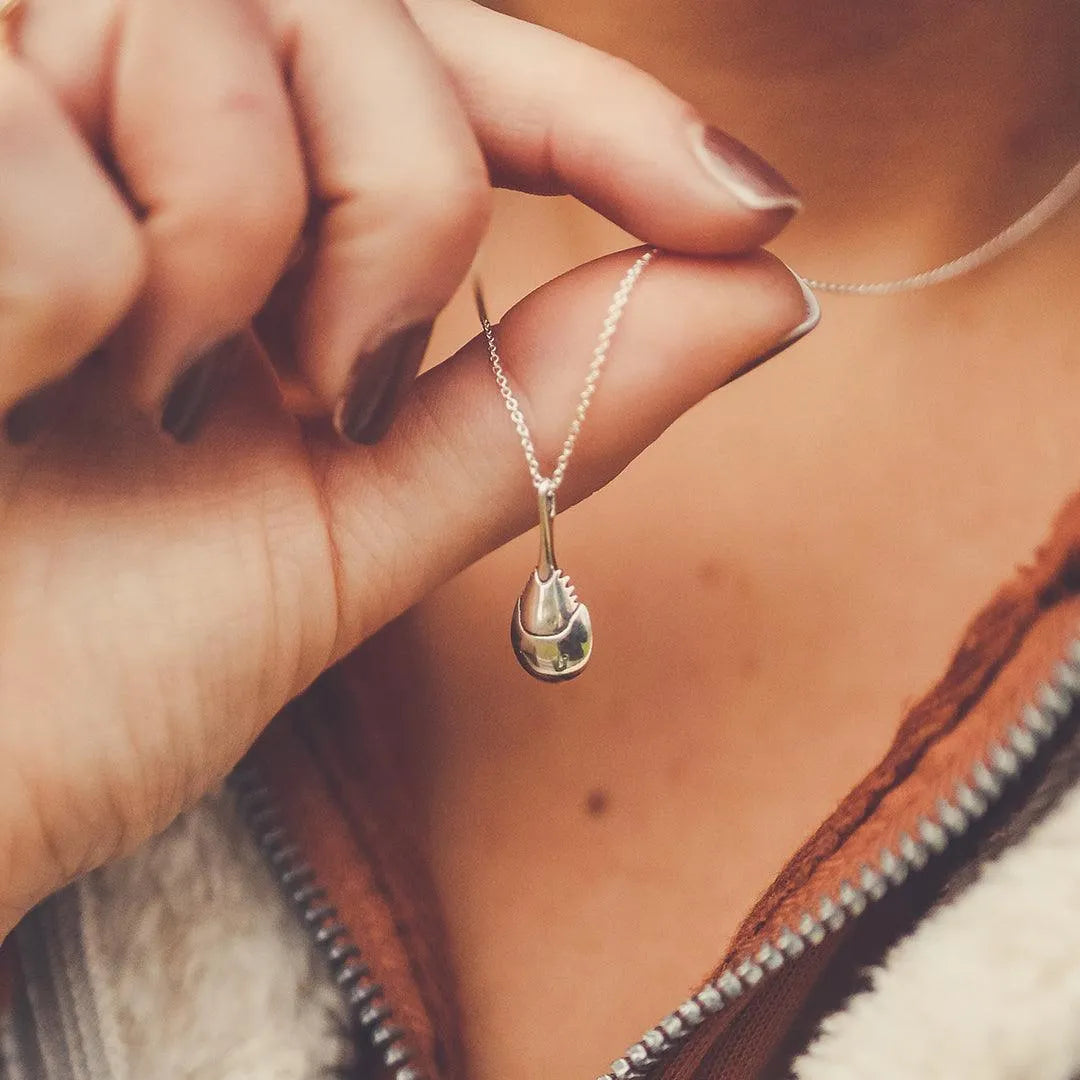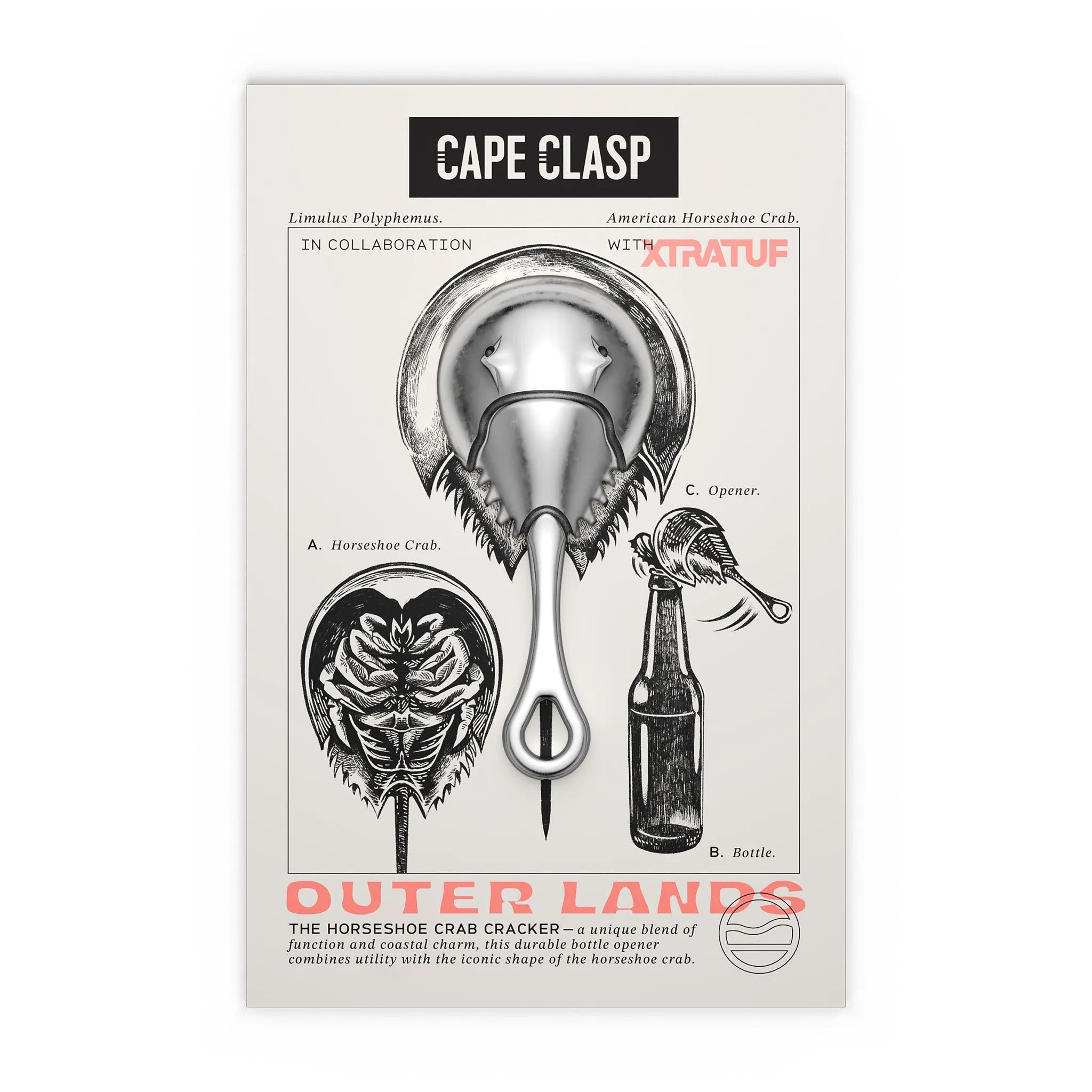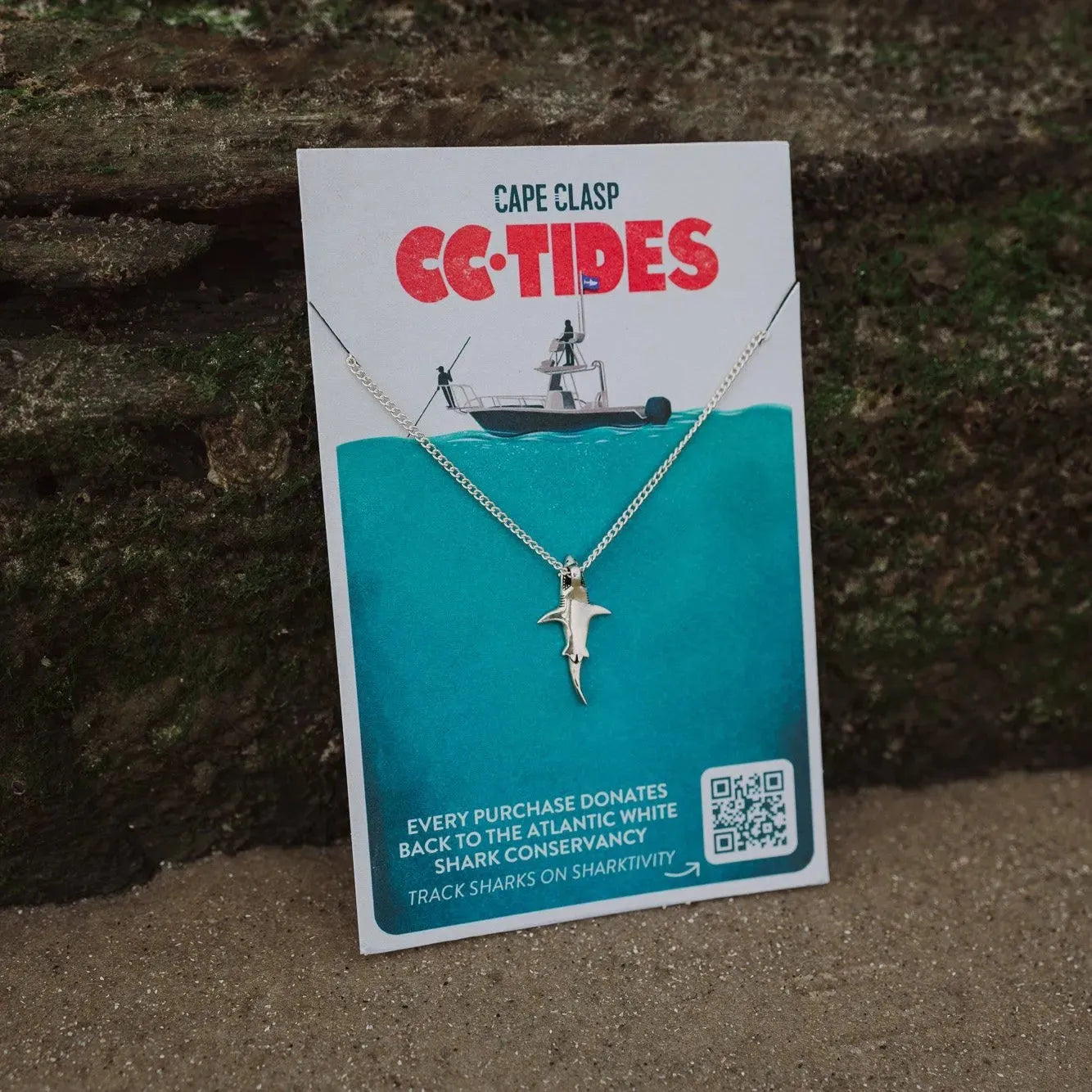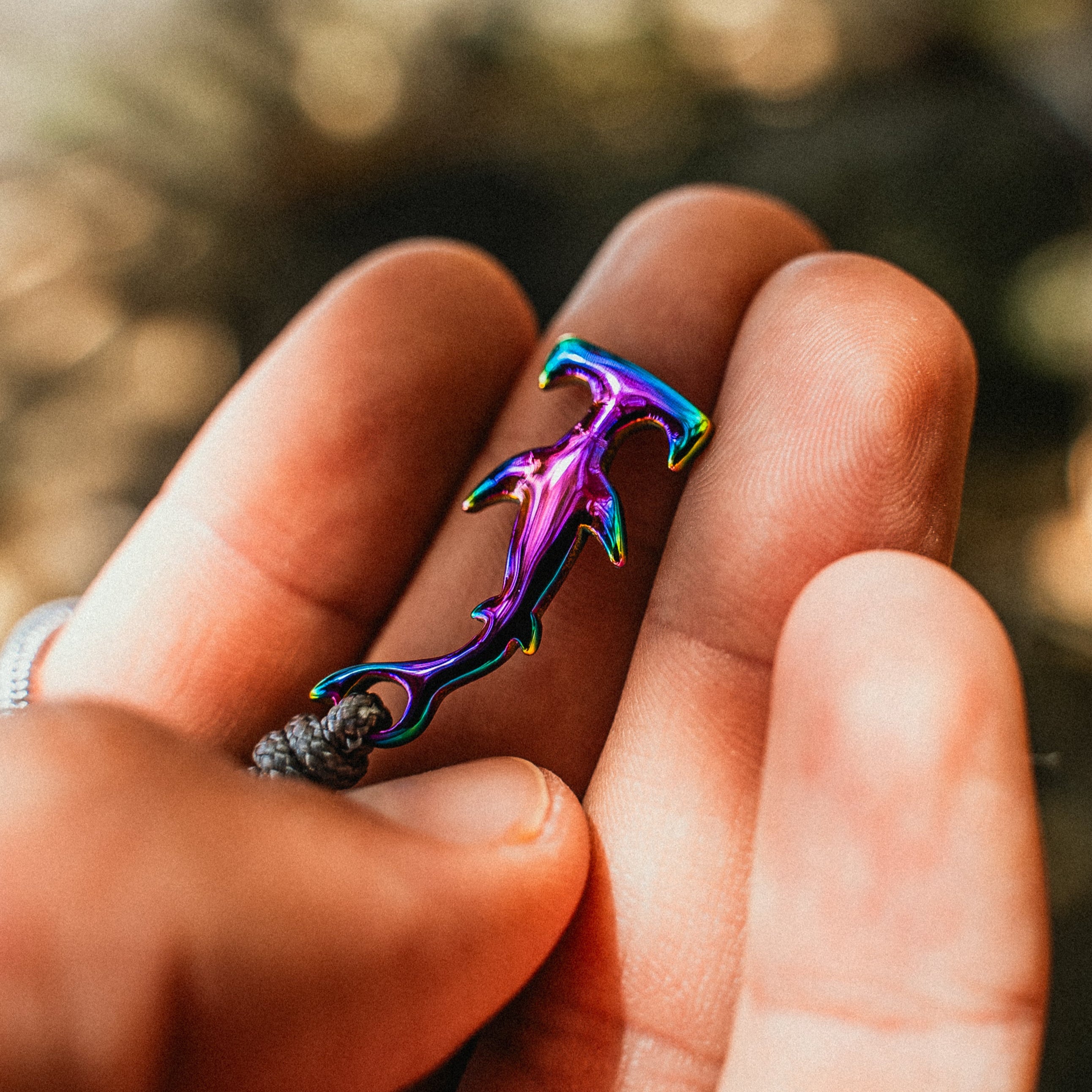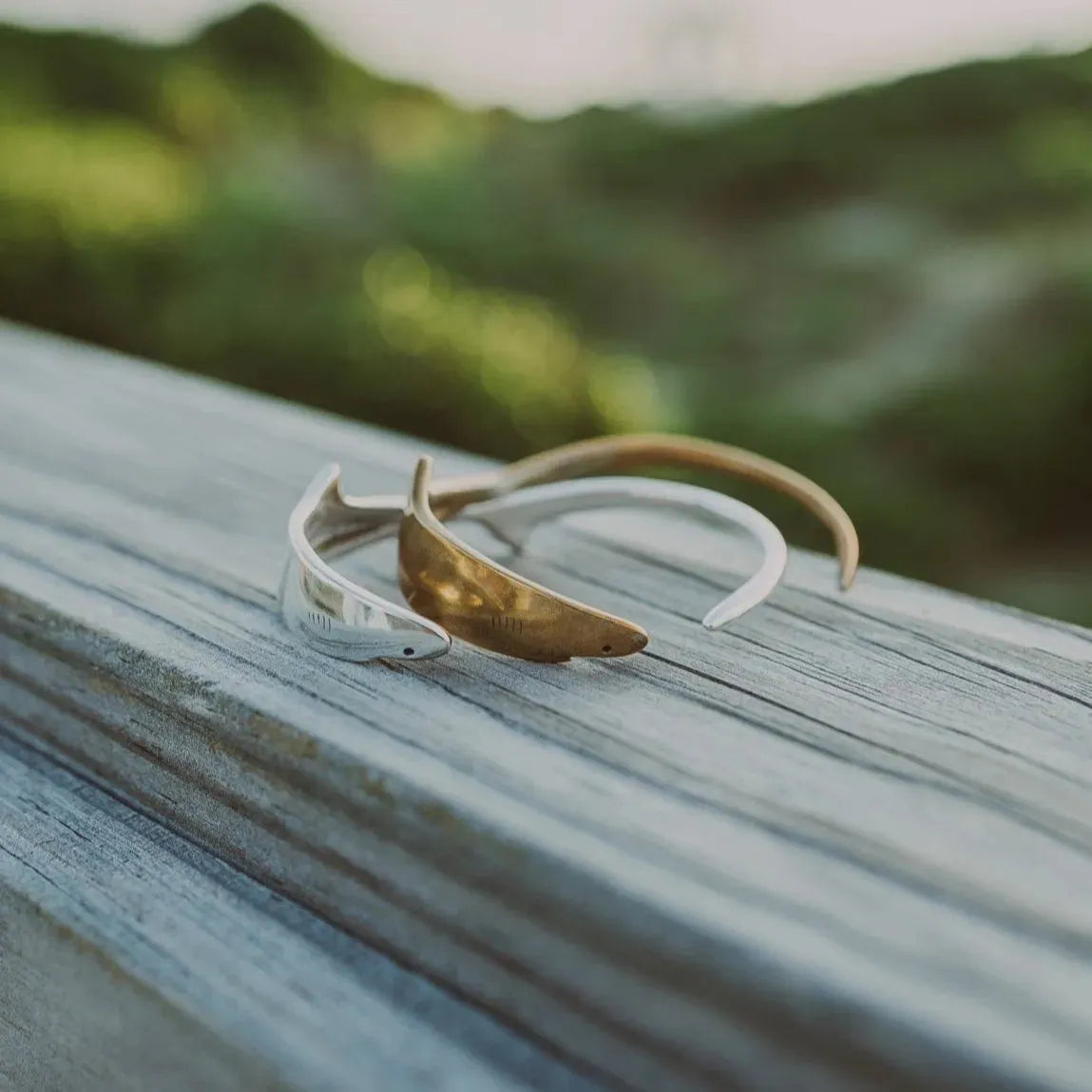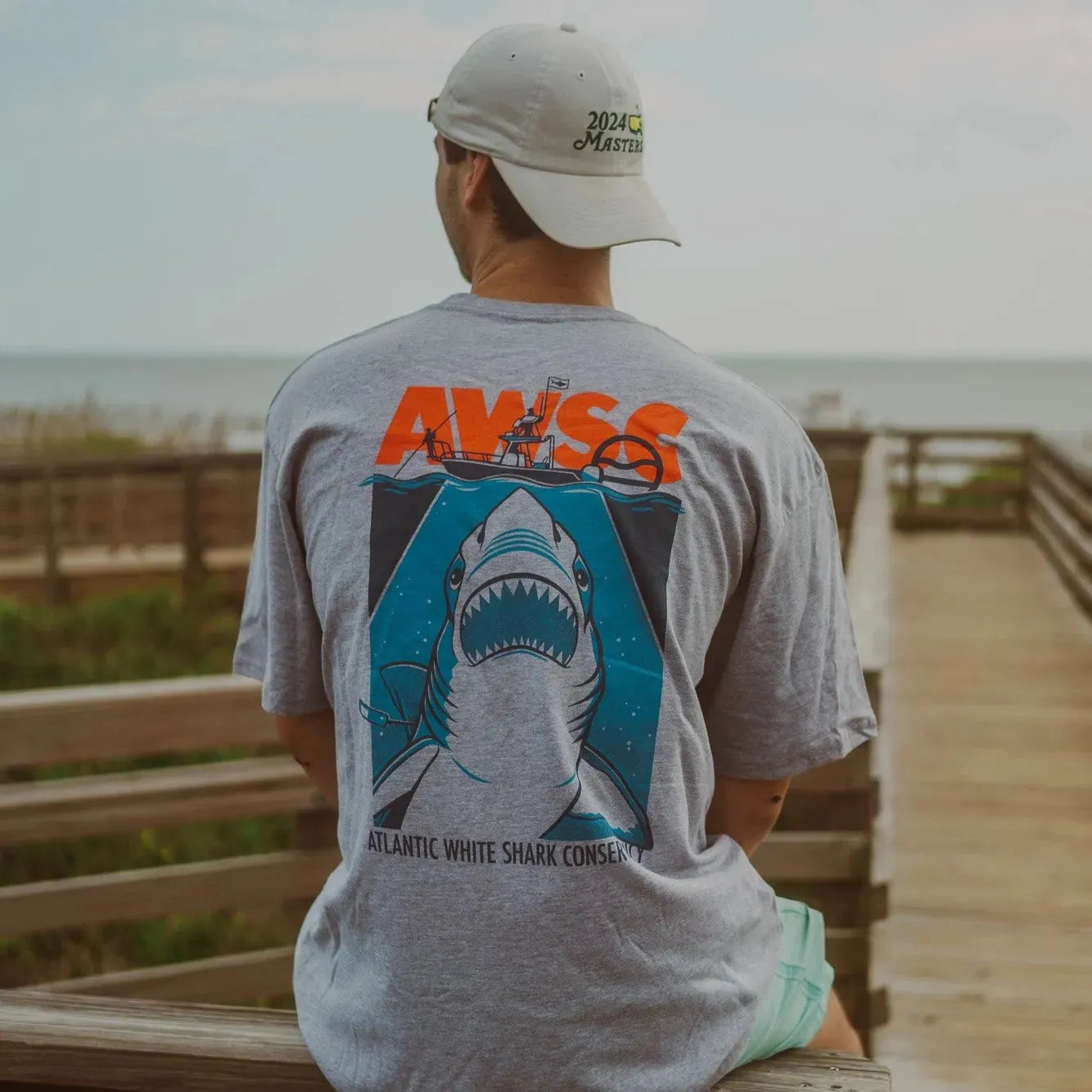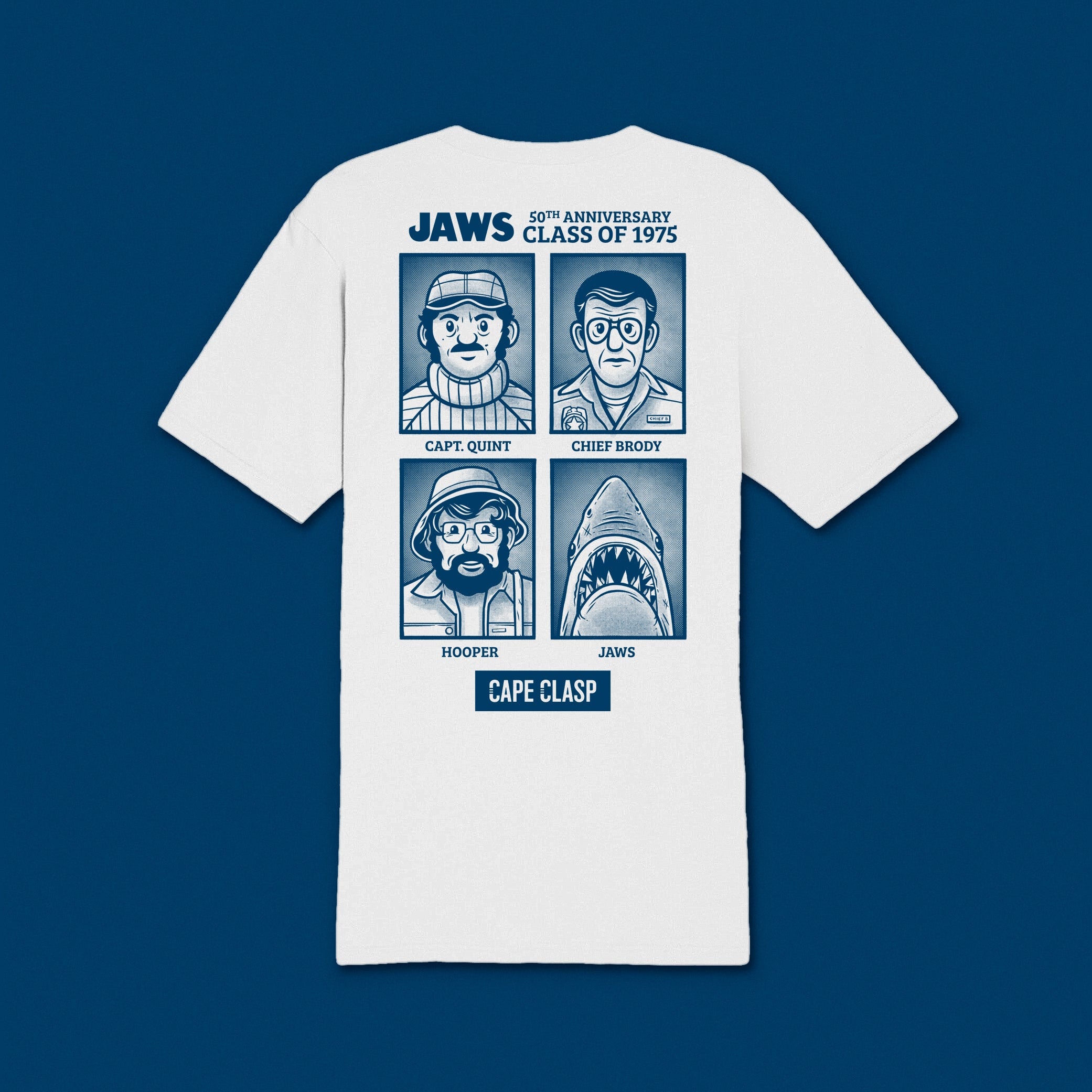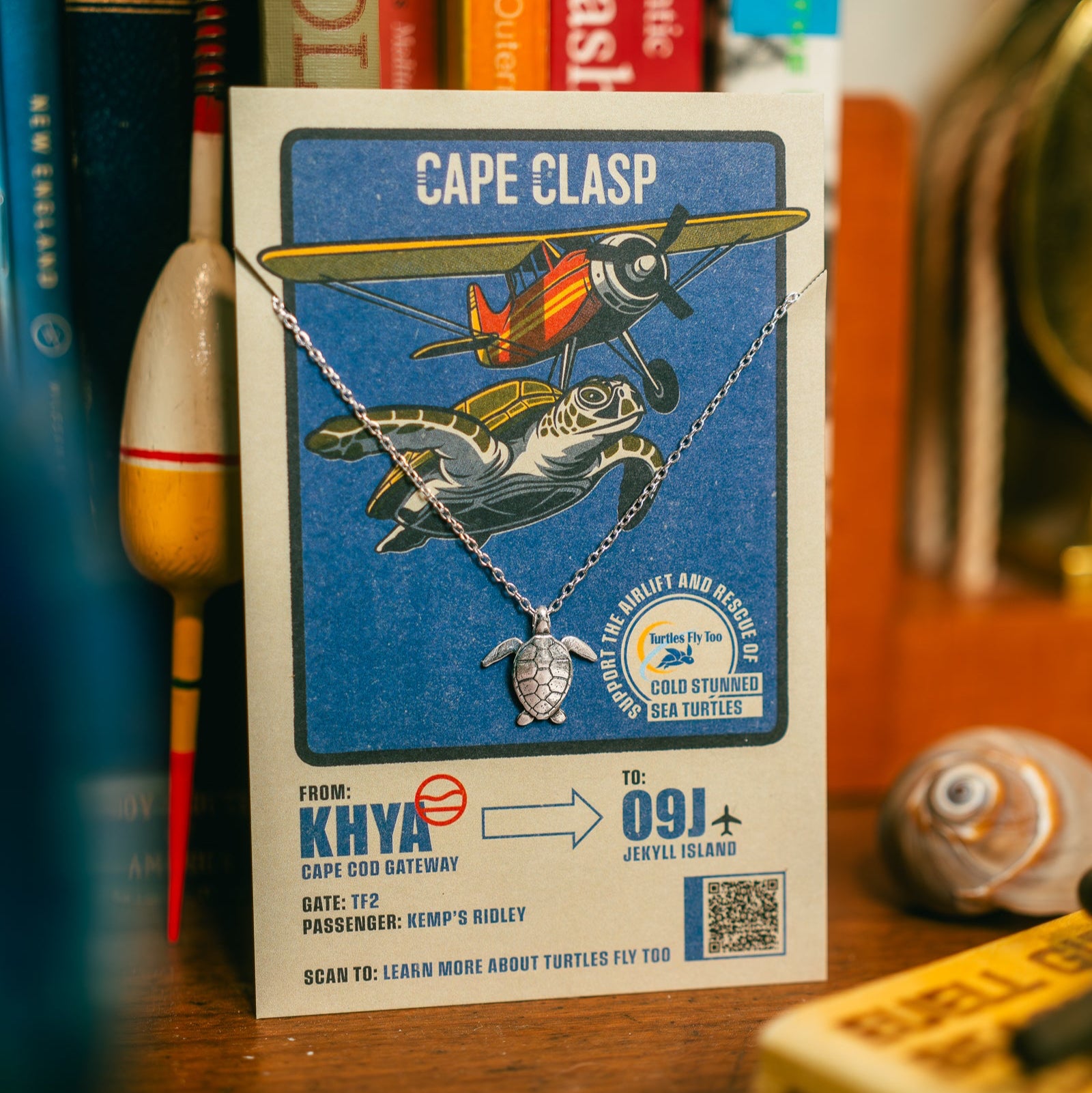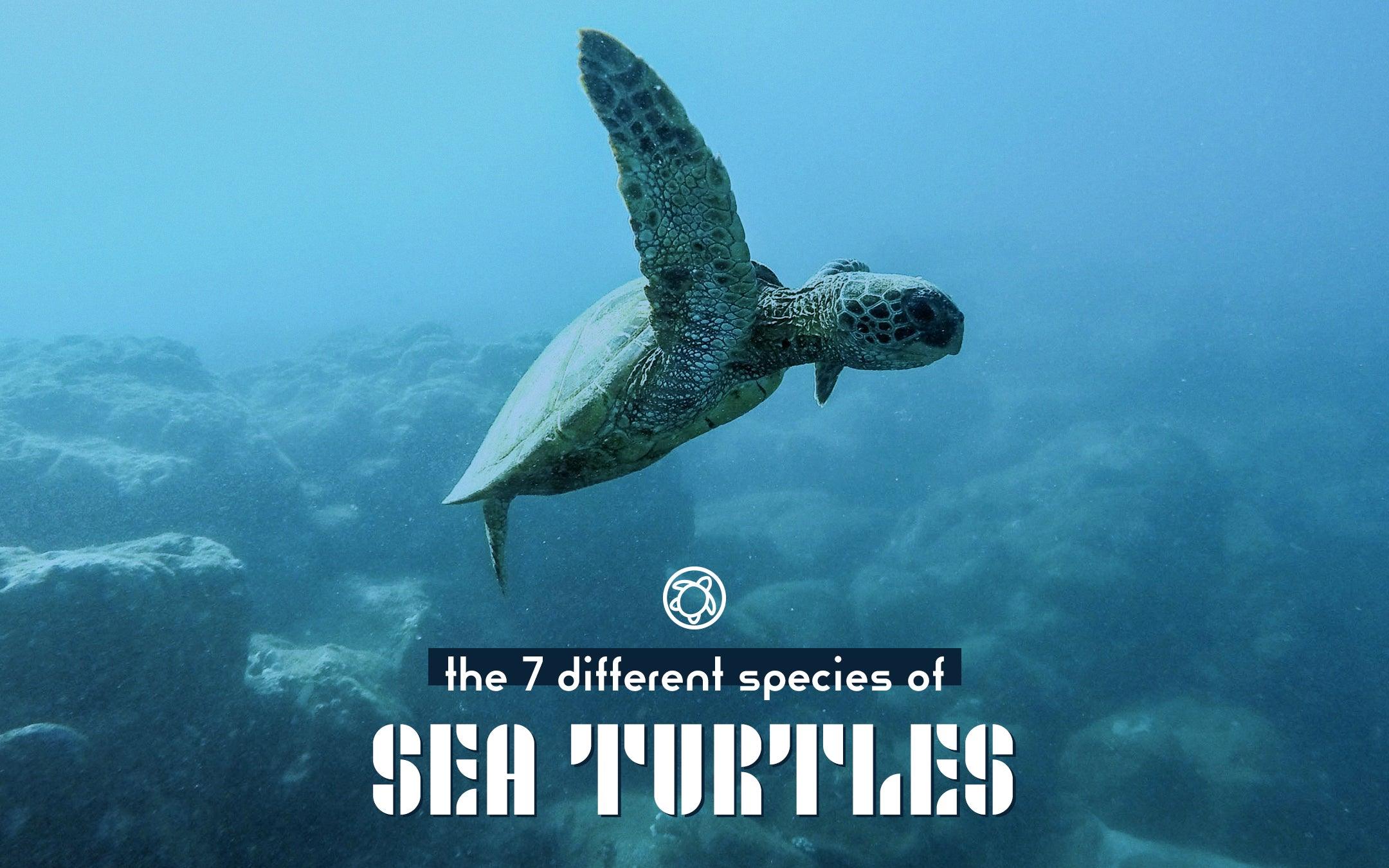
What are the different species of sea turtles?
Did you know there are 7 distinct sea turtle species? They look very different from one another, grow to different sizes, eat different foods, and inhabit different areas of the world.
Unfortunately, all sea turtle species are considered either endangered or threatened. Some of the dangers they face are being hunted for their eggs or shells, getting caught in fishing nets, and eating plastic or being otherwise affected by ocean pollution.
Read on to learn about the differences between each type of turtle and what you can do to help save them!
1. Leatherbacks

Have you ever seen an 8-foot sea turtle! If you were to see one it would be an old leatherback. Leatherbacks are the largest sea turtles with the average adult measuring about 5-6 feet in length and weighing about 600-800 pounds. They eat mostly soft-bodied invertebrates and can consume about 73% of their body way in one day!
They don’t have a hard shell like other turtles. Instead, they have thick leathery skin covering a bony matrix. This flexible carapace allows them to dive to depths of 4,000 feet or more, far deeper than other turtle species and even most other animals.
They tend to live in the open ocean and can be found in the Pacific, Atlantic, and Indian Oceans. To mate, they migrate to tropical and subtropical coasts.
2. Green Sea Turtle

Green sea turtles are the second-largest type of turtle. They reach up to about 4 feet in length and can weigh nearly 500 pounds. These herbivores love to dine on seaweed, seagrass, algae, and other plants.
Their finely serrated beak allows them to eat the grass without disturbing the roots. The way they trim the grass actually seems to help it to grow faster and lusher.
Green sea turtles tend to live in tropical and sub-tropical regions. They come ashore to bask in the sun and at night to lay their eggs.
3. Loggerhead

Loggerhead sea turtles have a big heavy head with a strong jaw that allows them to indulge in their diet of hard-shelled creatures. Adult loggerheads grow to about 4 feet and weigh between 200-400 pounds.
Loggerheads can be found in every ocean, but appear most often in the Middle East, the Mediterranean, Florida, Japan, and Australia.
4. Hawksbill

The smallish hawksbill turtle will generally only reach about 2 to 3 feet in length and weigh only 100-200 pounds. This turtle gets its name from the bird-like shape of its head that allows it to stick its head into crevices in coral reefs.
This is perfect for their diet which primarily consists of sponges. Their presence and ability to eat roughly 1,000 pounds of sponges in a year helps keep the population of sponges under control so they don’t take over and suffocate the reefs.
They also have a gorgeous shell that has been used for making tortoiseshell products. Due to their dwindling numbers, this practice is now illegal but you can still find people selling them on the black market. Always make sure any tortoiseshell products you’re buying have been manmade.
5. Flatback

Unlike other sea turtles with a curved shell, flatbacks have a flat grayish-green shell. They grow to be about 3 feet long and weigh around 200 pounds. They are found only in Australia and the surrounding areas.
Flatbacks are omnivores and enjoy a variety of foods including sea cucumbers, crabs, shrimp, fish, seaweed, and more.
6. Olive Ridley

The olive ridley sports a pale green shell that earns them their name. They are the second-smallest species, growing to about 2 - 2 ½ feet long and weighing only 75-100 pounds.
They tend to live in the open ocean and prefer the tropical regions of the world. In some places in the world (Central America, Australia, part of Africa) they nest together in masses.
For whatever reason, in other parts of the world where they live, they are solitary nesters. Sometimes the same turtle will use both nesting strategies and the reason why is unknown.
7. Kemp’s Ridley

Kemp's Ridley sea turtles win the prize for being the smallest sea turtle. They only get to about 2 feet long and weigh between 75 and 100 pounds. They are the only species of sea turtle that likes to nest during the day and they will also nest en masse like the olive ridley turtles.
They live close to shore and prefer to chow down on crabs, though they will also eat shrimp, fish, jellies, and mollusks.
The known population of Kemp’s ridleys dipped to only 200 individuals in the 1980s. Strict laws and conservation efforts have brought that number up to between 7,000 and 9,000. This is why the work of conservationists and sea turtle rescuers is so important.
Save the Turtles!
How can you help? Firstly, don’t buy turtle eggs or products made from tortoiseshell.
Secondly, you can help raise awareness. Your purchase of this beautiful turtle clasp sends 15% of the profits to the Mass Audubon Society. This organization’s Sea Turtle Rescue Program is doing great work by saving hundreds of cold-stunned turtles each year. Also check out our brand new 100% sterling silver turtle earrings that just came out!
Then, when you wear your bracelet, let it be a conversation starter and tell others about the plight facing sea turtles around the world and how they can help.

